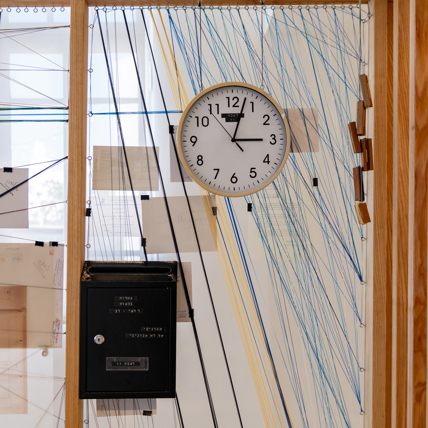Leoni Schein | Bureau 11


Leoni Schein defines herself as an “archival artist.” In her works, she explores the intersection of art, archivism, and information gathering. Schein creates installations that suggest imagined archives: collections that present alternative narratives and raise questions about sorting, classification, and display mechanisms.
Her new work, “Bureau 11,” is based on research she conducted in the Tel Aviv-Yafo Municipal Archive and the City Museum archives, established in 1959, back when it was still the “Museum of the History of Tel Aviv-Yafo.”
While delving into the archives, Schein found photos of “Municipal Information Offices” taken by Joseph Lior, the city’s photographer at the time. 10 such bureaus gradually opened and operated in the city from 1961. For about two decades, these bureaus provided residents and visitors with information on various topics – train and bus timetables, opening hours of museums and other sites, and other bureaucratic issues.They were also the address for complaints to the municipality concerning various hazards, requests, and suggestions. The bureaus also operated a local “Search Bureau for Missing Relatives,” to which hundreds of people wrote in search for family members with whom they had lost contact during WWII and the Holocaust, or under other circumstances. Alongside these services, the bureaus also worked closely with the “Public Information Center”: the government office that would later become the Israeli Ministry of Information, reporting to the Prime Minister’s Office. Schein recreates the story of the bureaus through documents, photographs, and other items. She uses a desk, marked walls, linoleum floor, and office lighting to set up the 11th Bureau: a bureaucratic space that invites visitors to step into the “information bureau of the information bureau,” and gather information about the information bureaus’ mechanism in its natural habitat, the municipal office.
Looking into the municipal knowledge mechanisms, Schein examines how information is collected, presented, and mediated, turning the spotlight on the link between municipal information gathering to control and supervision in the urban space.

